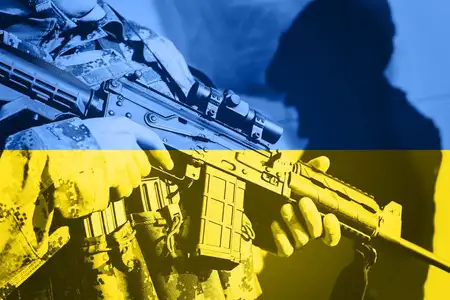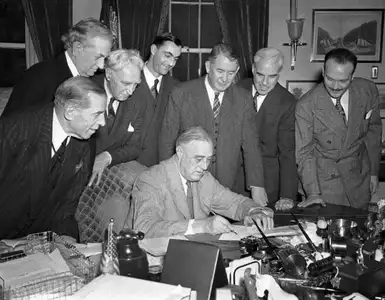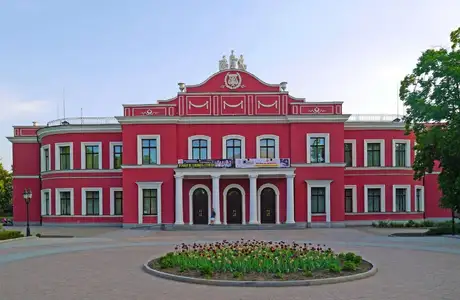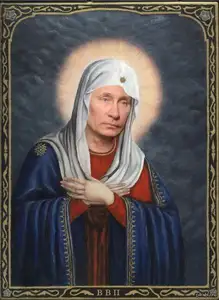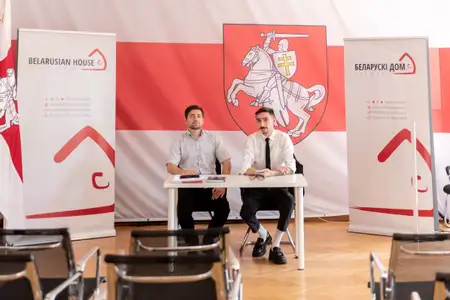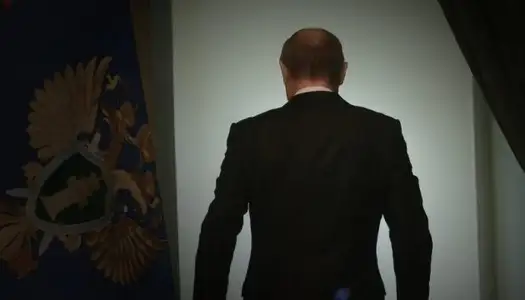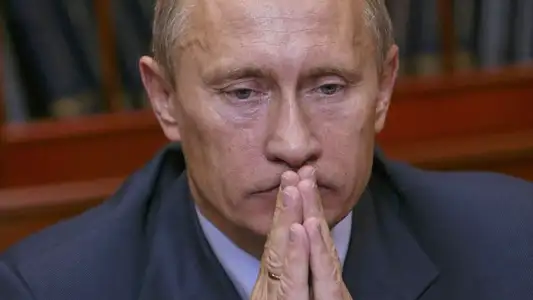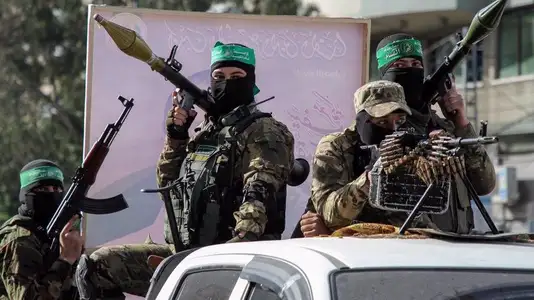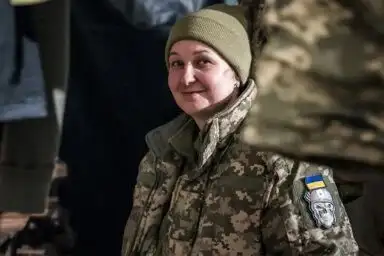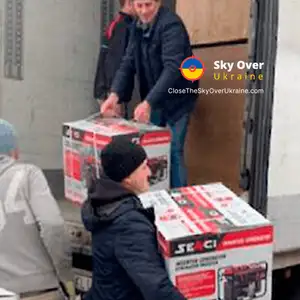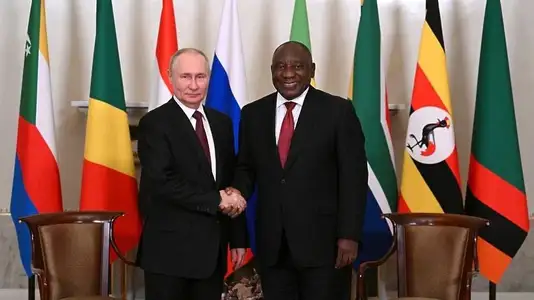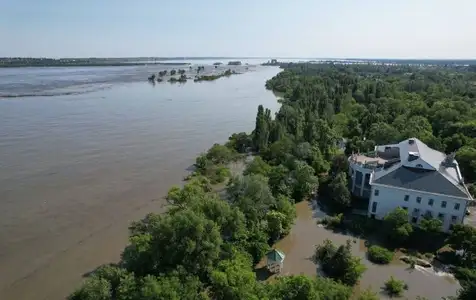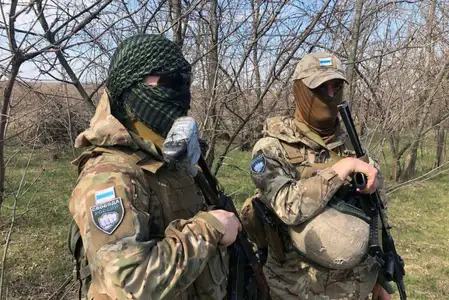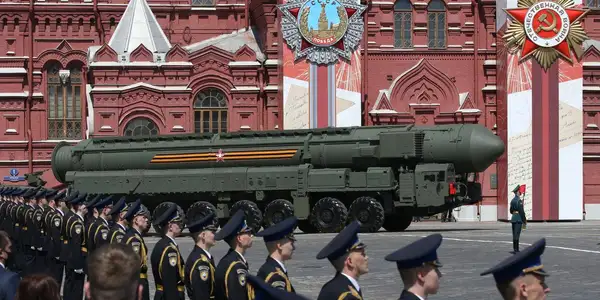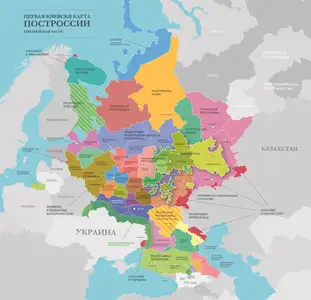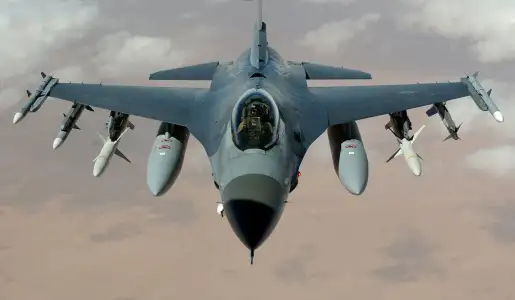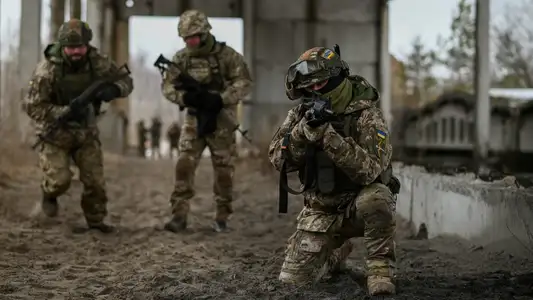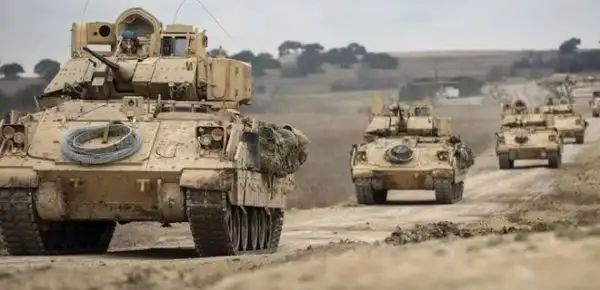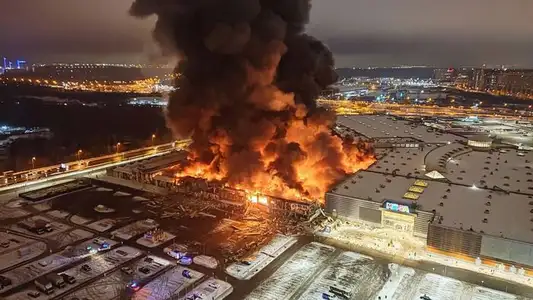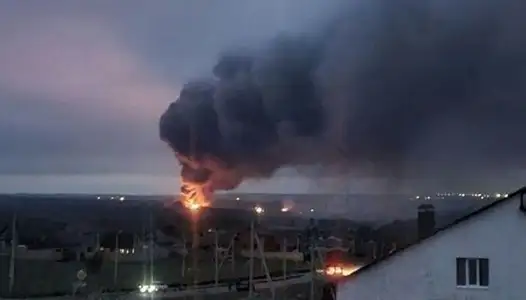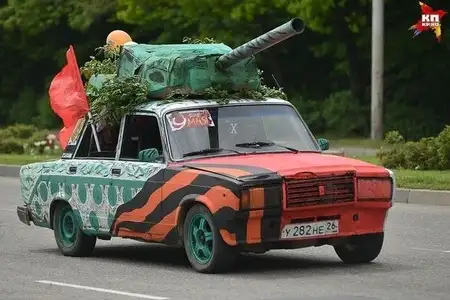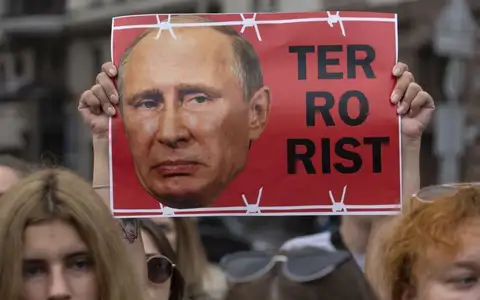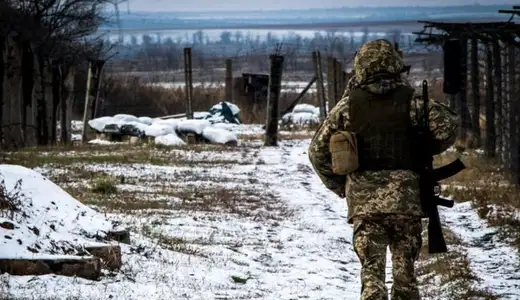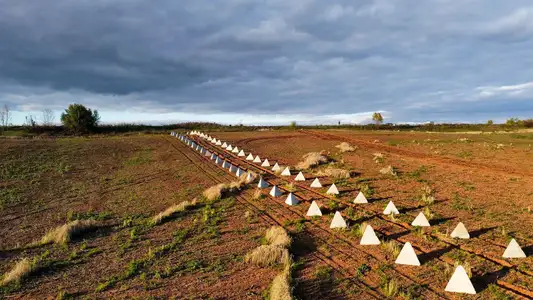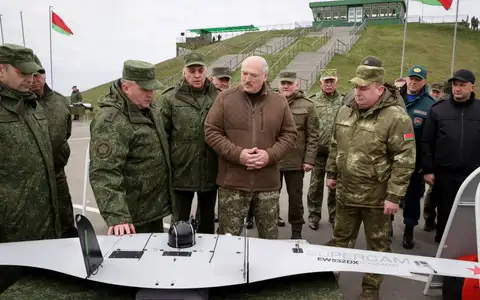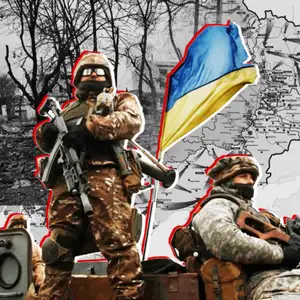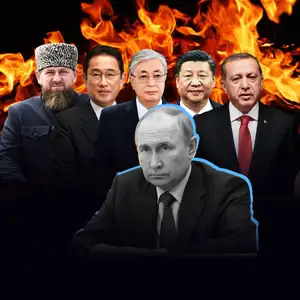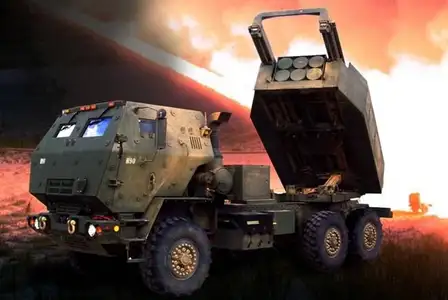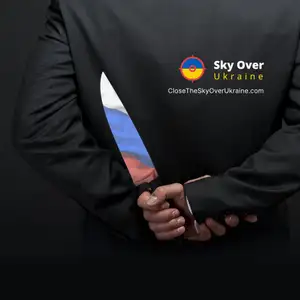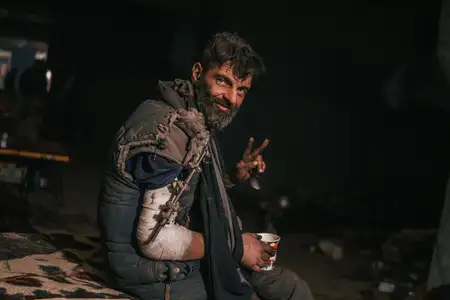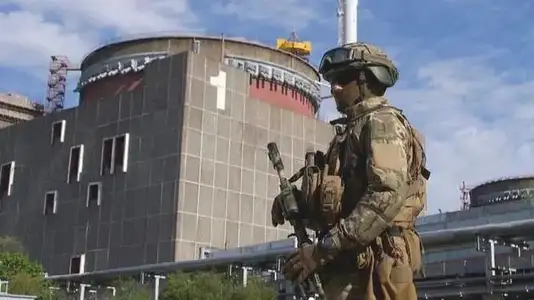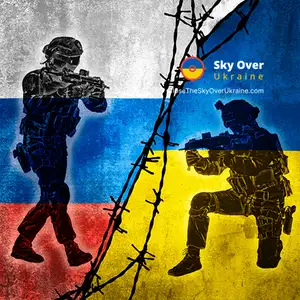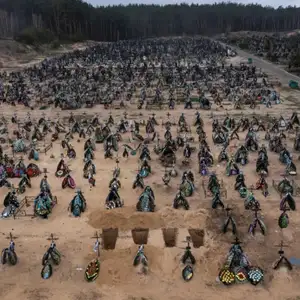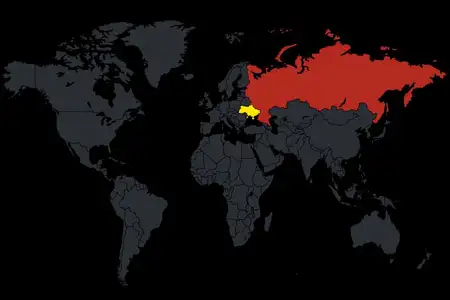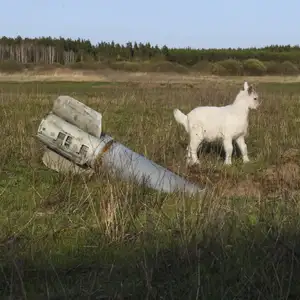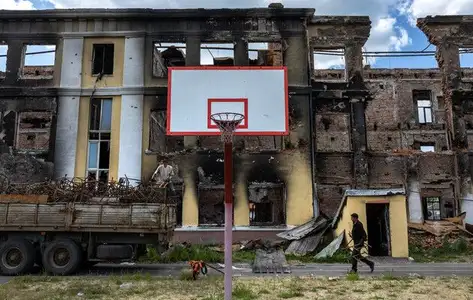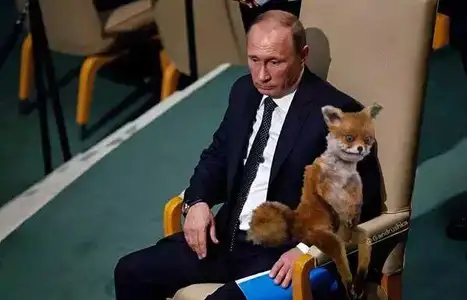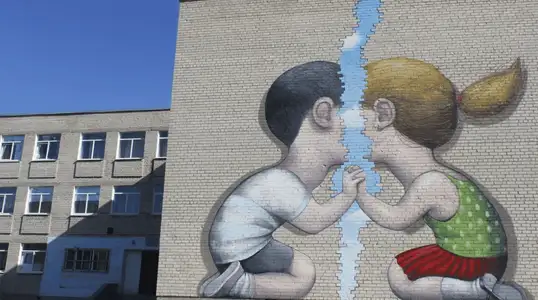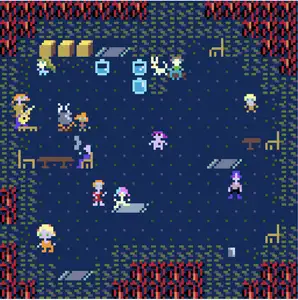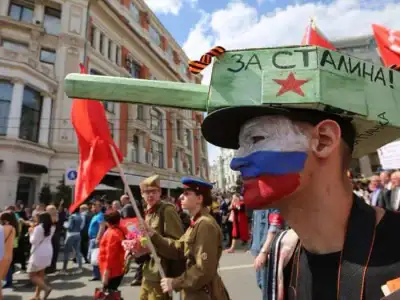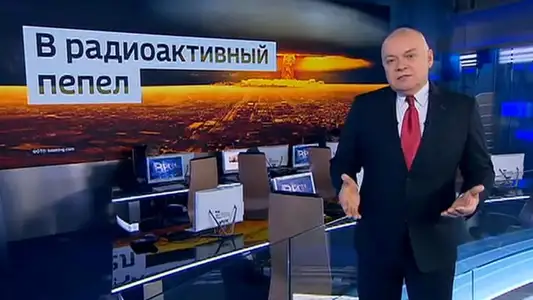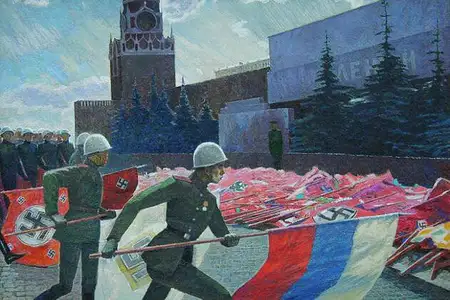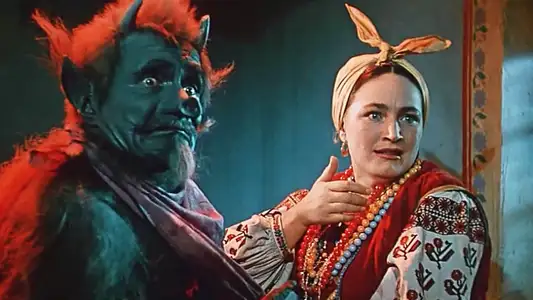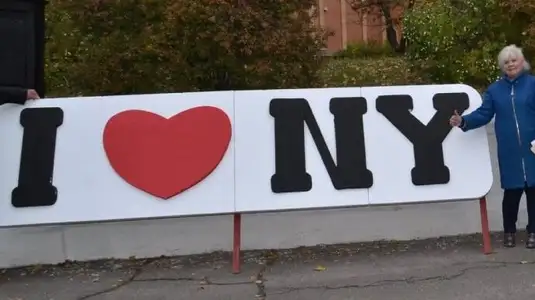Ukraine's independence: what we have been fighting for centuries
On the 32nd anniversary (of the restoration) of Ukraine's independence, we would like to tell you about the Ukrainian people's path to independence and freedom.
In 2022, Ukraine, the largest country in Europe by territory, became known all over the world. For a year and a half now, Ukrainians have been repelling the aggressor's invasion with the support of the entire civilized world and defending not only themselves and their country, but also the values of freedom and democracy as such.
We, Ukrainians, are extremely grateful to everyone who supports us around the world and believes in our victory. And we would like you, dear friends, to know more about Ukraine and its history, so that you can better understand the processes that are taking place now, right before your eyes.
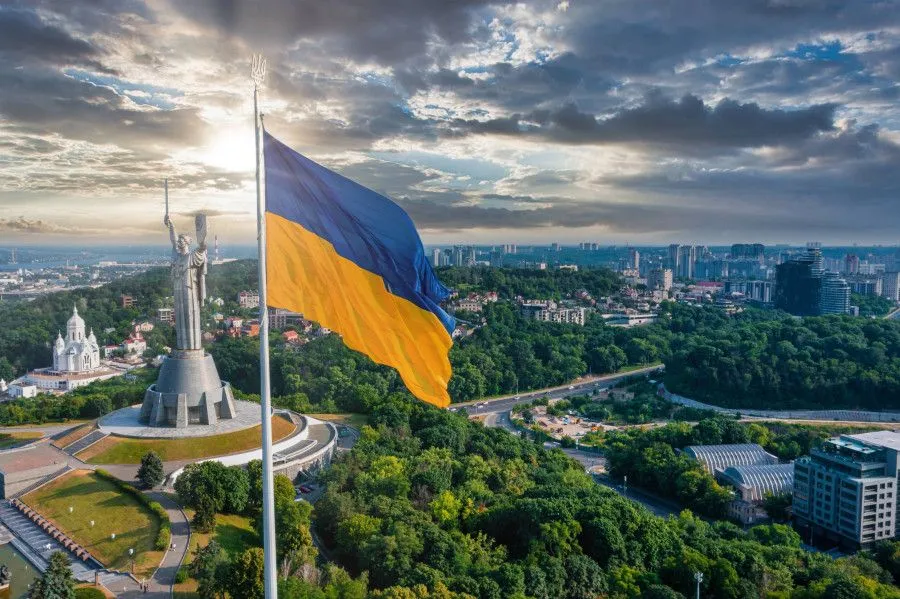
Kyivan Rus: a powerful medieval state of ancient Ukrainians
In the Ukrainian lands, the traditions of state-building go back to the Middle Ages. From the late 9th to the mid-13th cent., the state of Kyivan Rus, centered in the ancient city of Kyiv, existed on the territory of modern Ukraine, parts of modern Russia, and Belarus.
In the 11th and 12th cent., Orthodox Kyivan Rus was one of the most developed and influential states in medieval Europe, and Kyiv was one of the largest cities in the world, with a population of over 100,000 in the early 12th century. The state had diplomatic and economic relations with European countries and was well integrated into the European community.
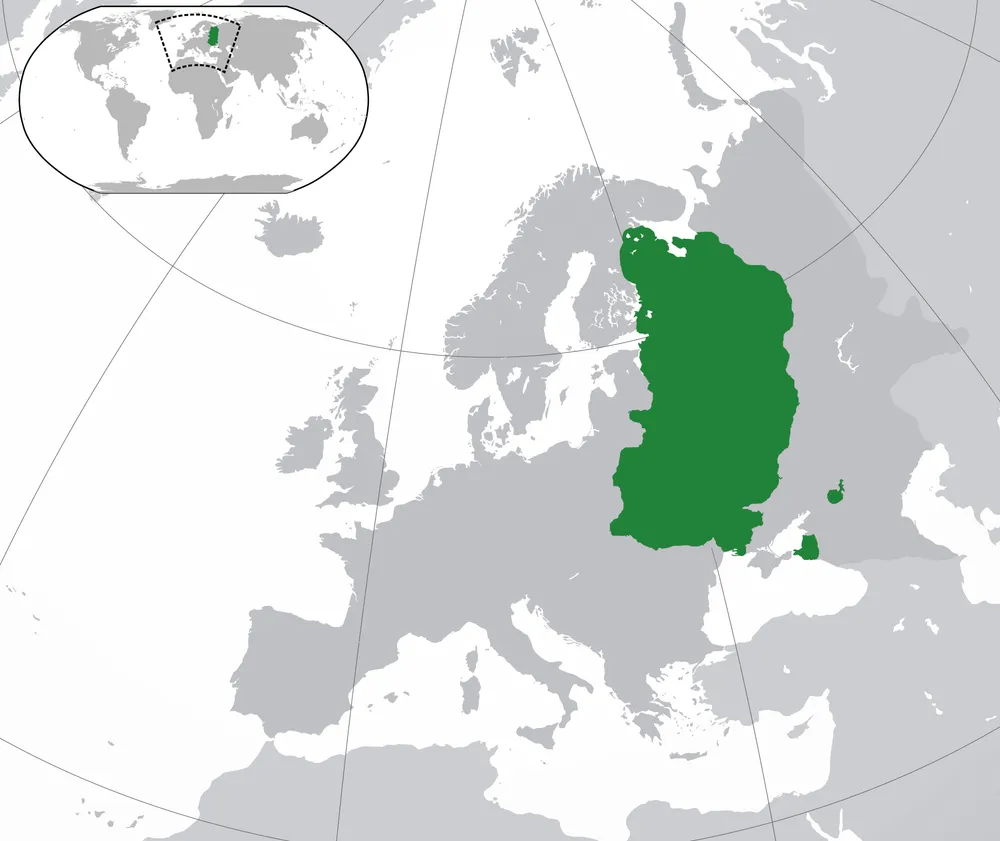
The territory of Kyivan Rus in the mid-11th century
In particular, there were marriages between the family of Kyivan princes and some European royal dynasties. For example, Anna, the daughter of Grand Prince of Kyiv Yaroslav the Wise, became Queen of France in 1051, the second wife of King Henry I of France and the mother of King Philip I of France. Yaroslav's daughter Anastasia became Queen of Hungary (wife of King Andrew I). His daughter Elizabeth was the wife of the Norwegian king Harald Hardrada. No wonder Yaroslav the Wise was called the "father-in-law of Europe," and thus a lot of European monarchs are his descendants.
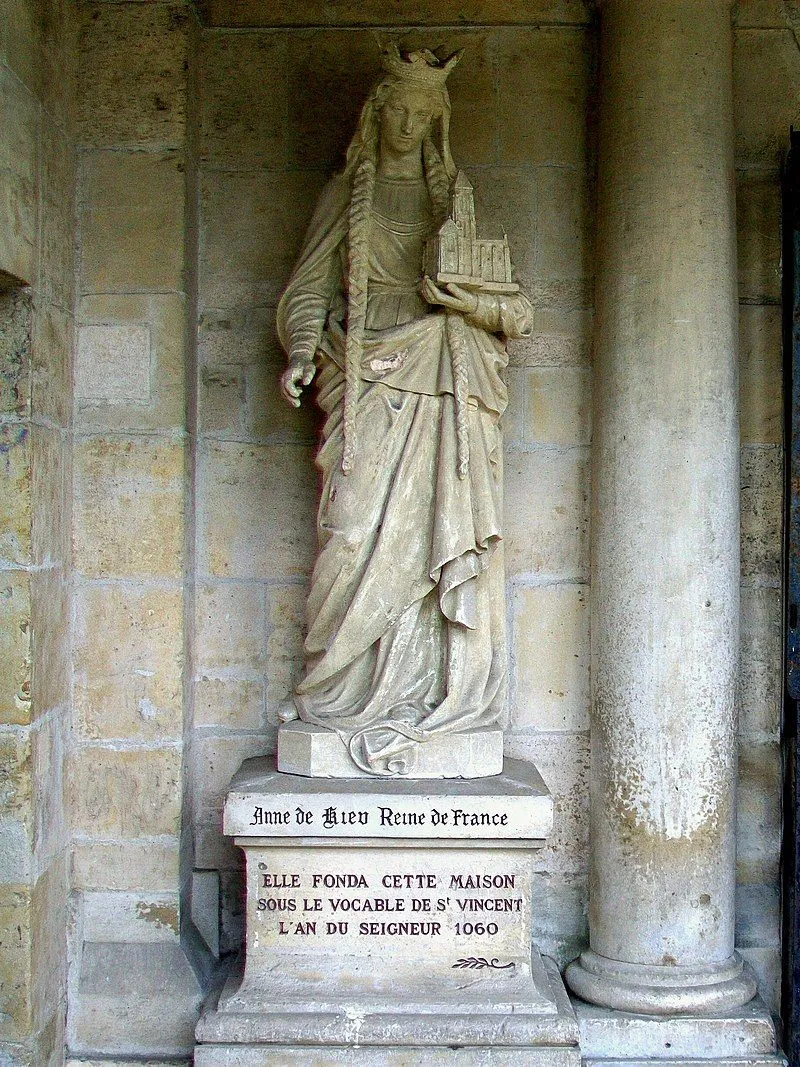
Statue of Anna of Kyiv, Queen of France, at the Abbey of Saint-Vincent (2011)
How the ancestors of Ukrainians lost their independence
In 1240, Kyiv was captured and destroyed by the Mongols during their full-scale invasion of Eastern Europe. The once powerful state fell into pieces. For another century, until the mid-14th century, Rus continued to exist as a state in the form of the Kingdom of Galicia-Volhynia (also known as Kingdom of Ruthenia), located on the territory of modern western Ukraine, with its center in the city of Lviv.
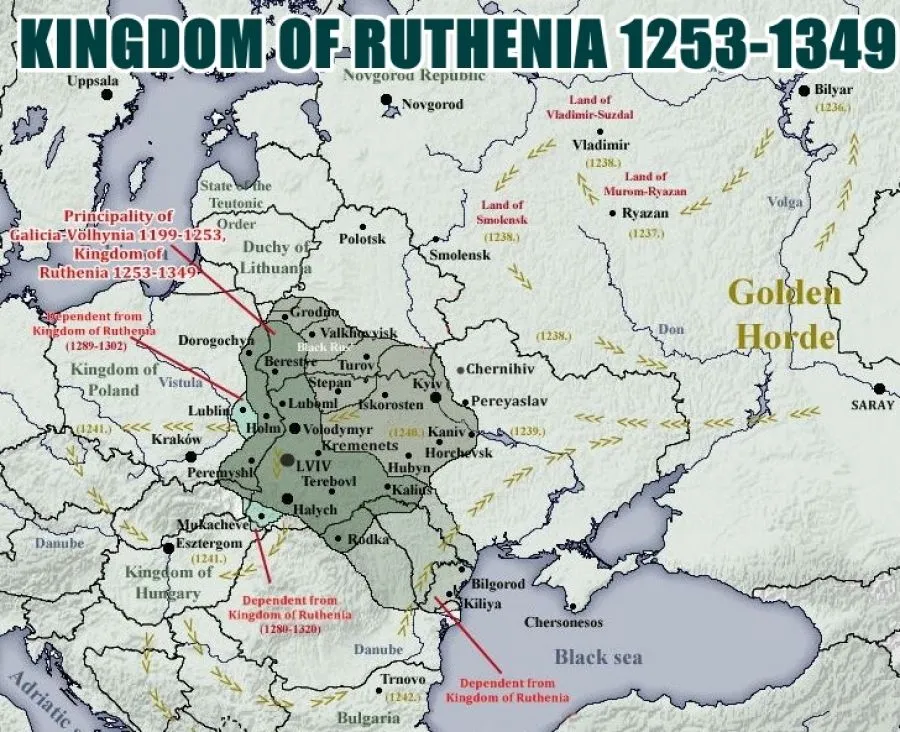
Kingdom of Galicia-Volhynia, or Kingdom of Ruthenia
In the mid-14th century, the Ruthenians, the ancestors of modern Ukrainians, permanently lost their statehood and, consequently, their independence for many centuries to come. The various “fragments” of Kyivan Rus were now part of different states: Galicia was part of the Kingdom of Poland, Volhynia, Kyiv, and the northern lands were part of the Grand Duchy of Lithuania.
Later, in the mid-16th century, these two states (Poland and Lithuania) united to form the Polish-Lithuanian Commonwealth (Rzeczpospolita). Thus, the western, northern, and central lands of Ukraine, along with Kyiv, were part of the Polish-Lithuanian Commonwealth.
In parallel, in the north, on the basis of the northern principalities of ancient Kyivan Rus, the Moscow state, or Muscovy, developed, which in the early 18th century would become the Russian Empire. Conflicts constantly arose between Muscovy and the Polish-Lithuanian Commonwealth and wars were fought from time to time, including over Ukrainian lands.
Cossack Hetmanate: the unique state of the Ukrainian Cossacks in the 16th-18th centuries
The main task of the conquered Ukrainian people, divided between two powerful states, was not to “dissolve” among them and to preserve their identity. In order to finally revive their statehood and independence when the time came. And in this struggle, since the 16th century, Ukrainian Cossacks have played a central role.
The Turkic word “Cossack” means “free, independent person”, “free warrior”, “adventure seeker”. The Cossack troops were initially organized at the turn of the 15th and 16th cent. to defend the Ruthenian lands that became part of the Grand Duchy of Lithuania from the steppe hordes of Muslim nomads on the territory of modern Ukraine. Subsequently, the Cossacks took an active part in the wars with the Muscovy on the side of the Polish-Lithuanian Commonwealth.
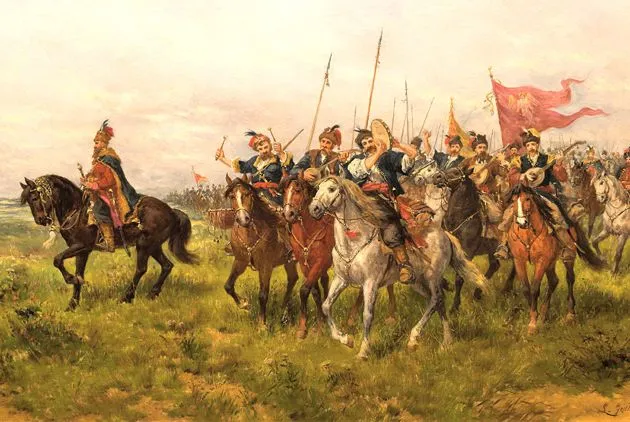
Cossack army
In the 17th century, the Cossacks' military power and political influence grew. In 1648-1657, a major Cossack uprising led by Hetman Bohdan Khmelnytsky (1596-1657) took place on the Ukrainian territories of the Polish-Lithuanian Commonwealth, which went down in history as the National Liberation War. Cossacks and Ukrainian peasants fought against the oppression of the Polish gentry and for the expansion of their rights and freedoms.
As a result of the National Liberation War, a Cossack state, the Hetmanate, was formed. Although formally the Hetmanate did not have full independence but existed on the basis of autonomy, it was one of the strongest and most integral Ukrainian state entities. Hetman Ivan Mazepa (1639-1709) played an important role in the formation and strengthening of the Hetmanate's influence, and his successor, Pylyp Orlyk, drafted the first Ukrainian constitution in 1710.
The Hetmanate was constantly between two fires and did not have enough resources to resist both powerful enemies - the Polish-Lithuanian Commonwealth and Muscovy (in addition, there were periodic clashes with the Crimean khans who threatened from the south). Consequently, the Cossacks were forced to resort to situational alliances. Thus, since 1654, the Hetmanate was under the protectorate of Muscovy.
In 1667, a truce was signed between the Polish-Lithuanian Commonwealth and Muscovy to end the war between them. As a result of this truce, the Hetmanate was divided along the Dnipro River into Right Bank and Left Bank Ukraine. The Left Bank Ukraine, along with Kyiv, came under the control of Muscovy. After the Polish-Lithuanian Commonwealth finally abolished the Cossack system on the Right Bank in 1699, autonomy continued to exist only on the Left Bank.

The first page of Pylyp Orlyk’s constitution in Latin, 1710 (the original is kept in the National Archives of Sweden)
During the 18th cent., the Hetmanate gradually lost its political and economic autonomy. In 1764, by order of the Russian Empress Catherine II, the institution of the hetman was abolished, and a year later the Hetmanate was reformed into the Government of Malorossiya, thus ceasing to exist.
Thus, the two great powers suppressed Ukrainians' aspirations for independence – neither the Polish-Lithuanian Commonwealth, nor Muscovy was interested in Ukrainians having their own state.
Indeed, the Cossacks at that time did not have the ability to preserve at least their autonomy, let alone create an independent Ukrainian state. But for us, Ukrainians, they are forever a symbol of courage, steadfastness and resilience of our people, they are our national heroes. No wonder we lovingly call our modern-day defenders Cossacks. They continue the glorious traditions of the Cossacks on the frontlines of the 21st century.
19th century: no chance for independence again
After the complete destruction of the Cossacks, most of the Ukrainian lands became part of the Russian Empire. After the first partition of the Polish-Lithuanian Commonwealth in 1772, the western Ukrainian lands became part of the Austrian Empire.
The second half of the 18th and 19th centuries was a period of brutal suppression of everything Ukrainian in the territories controlled by the Russian Empire. The Russian authorities tried by all means to destroy the aspirations of Ukrainians for freedom and independence.
However, it was the 19th century that gave us outstanding Ukrainian writers, poets, and philosophers who contributed to the creation of the Ukrainian nation, even though it did not yet have its own state. The most famous of them is Taras Shevchenko (1814-1861), the “prophet” of the Ukrainian people, a symbol of our struggle. You can see monuments to Shevchenko in every city, town, and village in Ukraine.
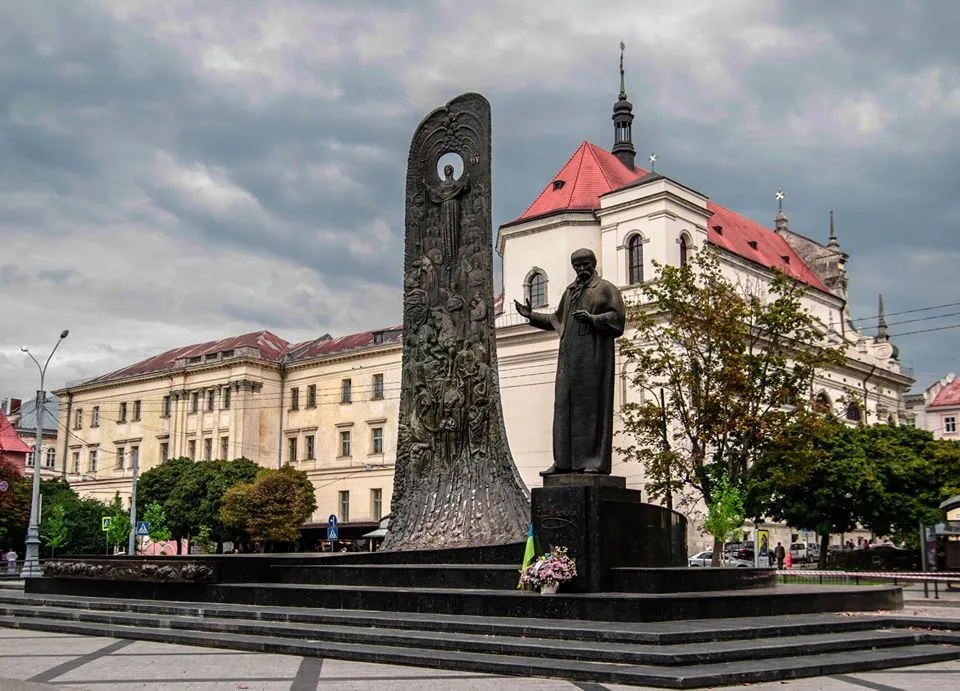
Taras Shevchenko monument in Lviv
The pressure of the imperial authorities culminated in the signing by the Russian emperor in 1863 and 1876 of two decrees that essentially banned the use of the Ukrainian language – first the publication of books, and later the use of Ukrainian in public institutions, churches, theater, and even in everyday life. Ukrainians had to use only Russian. Thus, Ukrainians on the Left Bank could not even dream of any autonomy; on the contrary, their national and other rights were restricted to the maximum extent possible.
The situation was better in western Ukraine, which was part of the Austrian (since 1867 the Austro-Hungarian) Empire. The “patchwork” Habsburg Empire, which consisted of 17 national provinces, was more loyal to representatives of national communities. It was in Galicia, particularly in Lviv, that Ukrainian identity was preserved and nurtured during the 19th century. Ukrainians had their own organizations here, could print books in their native language, and published their own newspapers. Many representatives of the Ukrainian intelligentsia from Russia-controlled Ukraine were forced to move to Austrian Galicia to continue their activities. However, even in Austria-controlled Ukraine, Ukrainians could not dream of their own state.
Gaining independence in the early 20th century
Ukrainians got their chance to gain independence during the First World War. In November 1917, after the Bolshevik October Revolution, the Ukrainian People's Republic (UPR) was proclaimed with Kyiv as its capital. Initially, it was considered an autonomous republic within the short-lived Russian Republic. On January 22, 1918, after the outbreak of the Ukrainian-Soviet war, the UPR was proclaimed an independent state.
The independent UPR established diplomatic relations with more than 20 countries. Until March 1918, it enjoyed the international support of the German and Austro-Hungarian empires. After the defeat of the latter in World War I, it was left without their help.
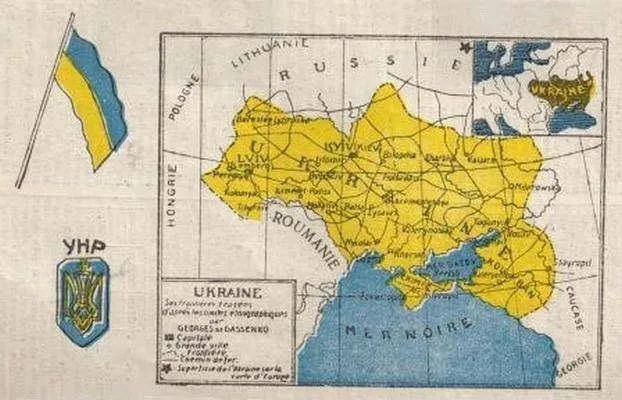
Ukrainian People's Republic – French-language map, dated 1918
At the same time, Ukrainians in Galicia also sought to restore their independence and statehood. On October 19, 1918, the Western Ukrainian People's Republic (WUPR) was proclaimed on the Ukrainian ethnic lands of Austria-Hungary, with Lviv as its capital. However, since historically a lot of Poles lived in Galicia, Poland, which was also in the process of regaining its independence, did not want to give up the region. The Polish-Ukrainian war began and lasted until the end of the summer of 1919.
On January 22, 1919, the UPR officially united with the WUPR. Thus, every year on January 22, we celebrate the Day of Unity of Ukraine.
However, Poland, which had the support of its Western partners and more resources, pushed Ukrainians out of Galicia, and by 1939 the region became part of the Second Rzeczpospolita (Polish Republic).
Meanwhile, the Bolsheviks were working on absorbing Ukraine and destroying the UPR. In early 1918, they proclaimed the Ukrainian People's Republic of Soviets with Kharkiv as its capital although they did not have substantial support from the local population. In the confrontation with the Bolsheviks, the young UPR, which did not have significant international support, could not hold out – the Bolsheviks gradually occupied its territory.
On March 10, 1919, on the Ukrainian territories controlled by the Red Army, the Ukrainian Socialist Soviet Republic (USSR) was proclaimed, which was essentially a puppet of the occupying Bolshevik regime.
And in early 1921, the territory of the independent UPR was divided between Poland, on the one hand, and Soviet Russia and the Ukrainian SSR, on the other, according to the Riga Treaty. In 1922, the Ukrainian SSR became part of the Soviet Union.
Thus, the Ukrainian independent state ceased to exist again.
The Soviet period: There is a state, but no independence
From 1922 to 1991, Ukraine was the second most powerful republic in the Soviet Union after Russia. The Soviet Union was a one-party state ruled by the Communist Party, so as you can imagine, the concept of freedom was very relative. And yet, there were many Ukrainians who dreamed of an independent state, but it was still a long way off...
The Soviet policy of making all people “Soviet people” rather than citizens of their national countries led to great losses for the Ukrainian people. The 1930s were particularly tragic for Ukrainians. Industrialization (the accelerated construction of heavy and light industry), collectivization (the unification of individual land holdings and labor into collective farms), a great famine – the Holodomor – in Ukraine (1932-1933), and finally, Stalin's repressions. All this radically changed socio-economic relations in the country and millions of people died.
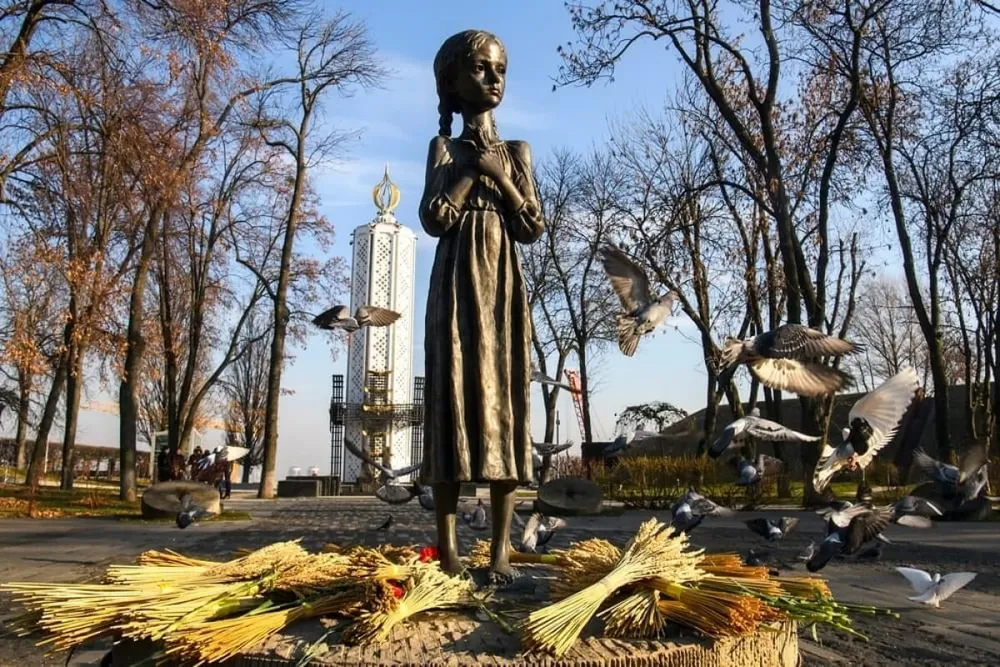
Memorial to the Holodomor victims in Kyiv
During World War II, the entire territory of Ukraine was occupied by Nazi troops. At the beginning of the war, an attempt was made to create a Ukrainian state under the German protectorate, but the occupation authorities had a negative attitude toward this idea, so it failed.
In September 1939, the Red Army occupied western Ukraine as part of the occupation of Poland. On October 27, 1939, a declaration was adopted in Lviv on the establishment of Soviet rule in western Ukraine and reunification with the Ukrainian SSR. Thus, western Ukraine was finally united with Greater Ukraine, but unfortunately, the country did not gain independence.
After the Nazi occupation, Soviet power in Ukraine was restored in 1944. More than 5 million people died in Ukraine during the war, and about 700 cities and towns were destroyed.
In 1954, the Crimea peninsula was transferred from the Russian SSR to the Ukrainian SSR, mainly to simplify economic relations.
This is how Ukraine was formed within its current borders, but as part of the USSR, actually under Soviet occupation.
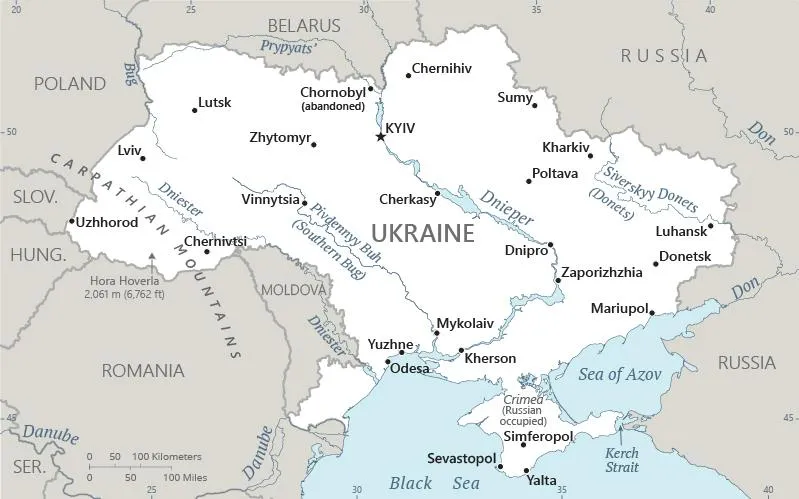
Modern borders of Ukraine
Restoration of independence in 1991
A set of economic, political, and social preconditions led to the collapse of the Soviet Union in 1991. One by one, the former Soviet republics declared independence.
On August 24, 1991, the Verkhovna Rada (Parliament) of the Ukrainian SSR proclaimed Ukraine's independence and the formation of an independent Ukrainian state, Ukraine, which was later confirmed in an all-Ukrainian referendum on December 1, 1991. 90.32% of Ukrainians supported the idea of Ukraine's independence.
Officially, the document is called the Act of Declaration of Ukraine’s Independence. In fact, however, it should have been called the Act of Restoration of Ukraine's Independence, because Ukraine had already been independent in 1917-1921, and now Ukrainians had regained their independence. However, back in 1991, the leaders of the young Ukrainian state did not want to “stir up the past” and emphasize this.
But for us, modern Ukrainians, it is of fundamental importance.
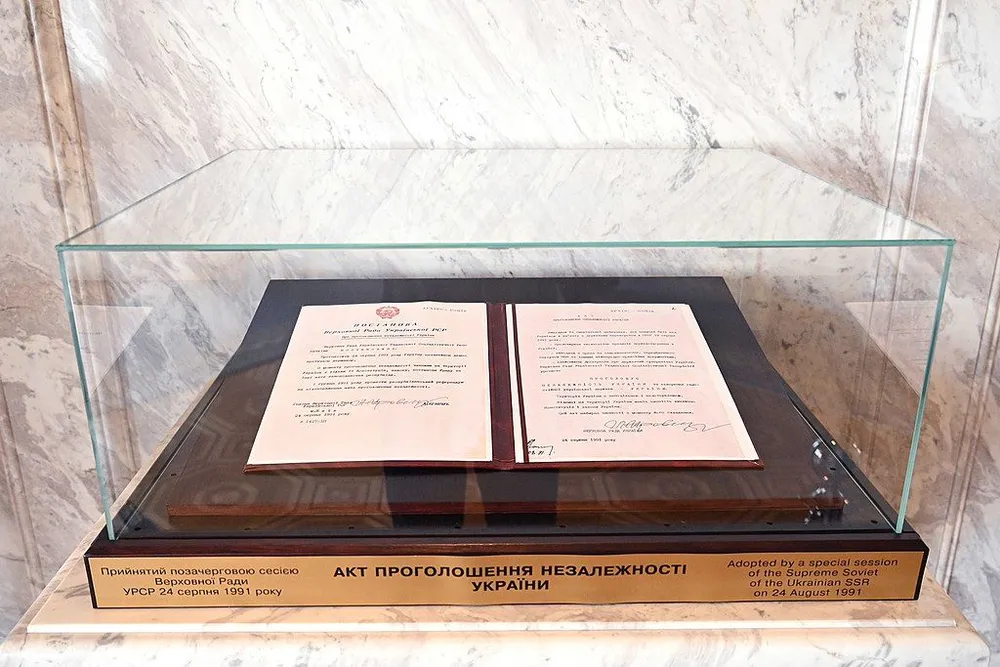
The Act of Declaration of Ukraine’s Independence in the Verkhovna Rada of Ukraine
21st century: We are still fighting for our independence and freedom
The vast majority of Ukrainians wanted to live in an independent country and finally achieved it. They survived the turbulent 1990s, the economic crisis caused by the collapse of the Soviet Union, and painful reforms.
And in the early 2000s, they began to declare their desire to follow a pro-Western path, as most Ukrainians associated their future with Europe, not Russia. Ukrainians saw development, progress and a bright future ahead, wanted to build their democratic country and, most importantly, to live the way THEY decided. This is what INDEPENDENCE is all about, isn’t it?
But, as they say, it did not happen as expected. Russia, the obnoxious “big brother”, did not want to put up with a free, independent Ukraine at its side. Russian leaders still consider their “empire” incomplete without Ukraine. Having failed to bring us to our knees with the help of economic leverage and a puppet president (we mean Viktor Yanukovych), Russia, namely Vladimir Putin, decided to wage war against Ukraine.
This, simply put, is the reason for Russia's current military aggression against Ukraine. We have analyzed Russian-Ukrainian relations and the causes of the current war in more detail in the article Why did the war start? A brief historical overview. And this war did not begin on February 24, 2022, but in the spring of 2014, and has been going on for ten years now.
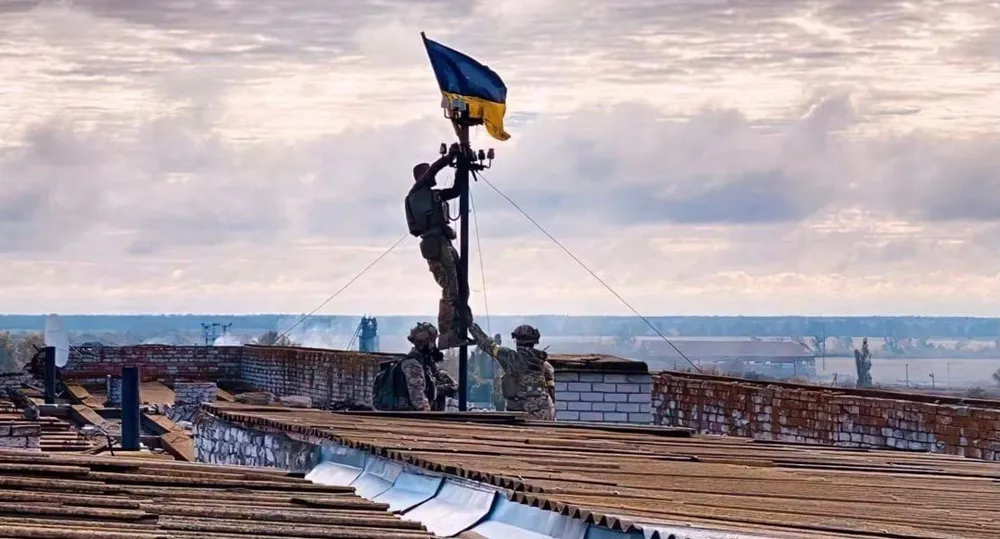
Yes, we are a nation that in the 21st century in the center of Europe is forced to fight for its independence arms in hand. Just as our heroic ancestors did for centuries. And we have no other choice – we have no right to lose our state once again.
Over the past year and a half, the concept of Ukraine's independence and freedom has taken on a much broader meaning. Ukraine, as the shield of Europe, must be preserved in order to preserve Europe in its current form. We are immensely grateful to all people of goodwill and all governments that support Ukraine in this struggle.
Ukraine is and will remain independent!
Anastasiya Glotova

